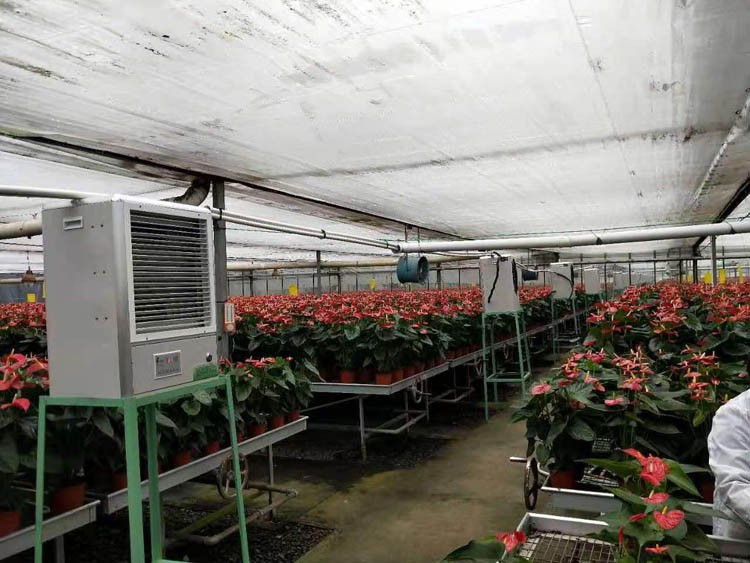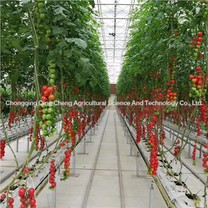Heating and Cooling of Folding Glass Greenhouse
Hot air heating The hot air heating system is composed of heat source, air heat exchanger, fan and air supply pipe. The working process is as follows: the heat provided by the heat source heats the air ventilator, and the fan forces part of the air in the greenhouse to flow through the air heat exchanger, so that the greenhouse is continuously heated. The heat source of the hot air heating system can be oil, gas, coal-fired device or electric heater, or hot water or steam. The heat source is different, and the installation form of the hot air heating equipment is also different. The greenhouse is equipped with an air heat exchanger for steam, electric heating or hot water heating system, which directly provides hot air with the fan. Fuel and gas heating devices are installed in the greenhouse, and the combustion flue gas is discharged into the greenhouse. Coal-fired hot blast stoves are generally bulky and dirty in use. Generally installed outside the greenhouse. In order to distribute the hot air evenly in the greenhouse, the hot air is sent into the ventilation duct by the fan.
3. Electric heating The more common electric heating method is to bury the hot wire on the ground underground to increase the ground temperature, which is mainly used for greenhouse seedling cultivation. Electric energy is the cleanest and most convenient energy source, but electric energy is a secondary energy source, and it is expensive in itself, so it can only be used as a short-term temporary heating measure.
When the outdoor temperature exceeds 30°C, the summer is hot and high, and the temperature inside the greenhouse exceeds 40°C. If the temperature in the greenhouse is only above 35°C, normal production in the greenhouse is not allowed, and other cooling methods must be used to reduce the indoor temperature. The greenhouse cooling methods that should be used in daily production mainly include:
Materials with low opacity or light transmittance are used in the shade to prevent excessive solar radiation from entering the greenhouse, which not only ensures the normal growth of crops, but also reduces the temperature of the greenhouse. Due to the difference in shading materials and installation methods, the greenhouse temperature can be reduced by 3°C to 10°C. Coloring methods include indoor coloring and outdoor coloring. The indoor shading system is a greenhouse frame support system made of wire or plastic wire mesh. Usually electric control or manual control is used. The outdoor sunshade system is to install a sunshade framework outside the greenhouse frame, that is, install a sunshade net on the framework, and the sunshade net can be driven by a curtain pulling mechanism or a film rolling mechanism, that is, it can be opened and closed freely. Solar energy can be blocked directly outside the greenhouse, and various shading networks are also available.
Evaporative Cooling Evaporative cooling utilizes unsaturated air and the latent heat of evaporation of water for cooling. When the moisture in the air is not saturated, the moisture will evaporate into water vapor and enter the air, while the water evaporates, absorbing the heat in the air, reducing the air temperature and increasing the air humidity. During the evaporation and cooling process, it is necessary to ensure the air circulation inside and outside the greenhouse, discharge the high-temperature and high-humidity gas in the greenhouse, and supplement fresh air. Therefore, forced ventilation must be used. At present, the method of evaporative cooling, wet curtain-fan cooling and spray cooling are used.
The roof spray cooling system is to spray water evenly on the roof of the glass greenhouse to reduce the temperature of the greenhouse. When the water flows on the roof of the greenhouse, the heat transfer water and glass on the roof of the greenhouse take away the heat in the greenhouse. In addition, when the thickness of the water film is greater than 0. 5%. When the thickness is 2 mm, the energy of solar radiation is absorbed and taken away by the water film, which is equivalent to sunshade.








